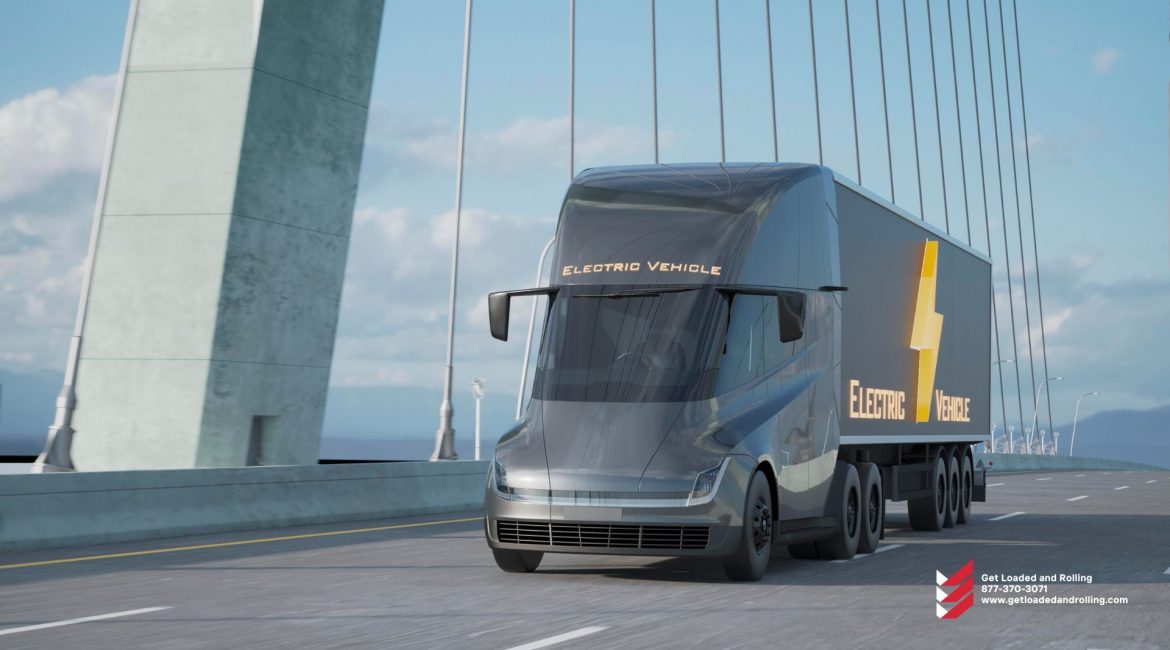SUNNYVALE, Calif. (AP) — Orders for medium- and heavy-duty battery-electric trucks from Kenworth Truck Co. have tripled in the last 90 days as fleets take advantage of incentives to offset the upfront cost and add zero-emission capacity ahead of upcoming sales quota regulations.
On Thursday, the electric versions of the Class 6 cabover K270, conventional Class 8 T680 day cab, and demonstration hydrogen-powered fuel-cell T680 built in collaboration with Toyota Motor Corp. were made available to the media for literally around-the-block rides and drives at the Paccar Innovation Center.
On Wednesday, approximately 30 Kenworth customers received the same PowerPoint presentation followed by an in-vehicle experience.
‘Orders from all over the country’
“We’ve quoted electric vehicles in 44 states,” said Hank Johnson, Kenworth’s general sales manager for vocational and medium-duty trucks. “We’ve received orders from every region of the country, as well as the majority of Canada.”
So far, media attention and the adoption of California’s Advanced Clean Truck rule by five other states have sparked interest, followed by a sense of urgency when the rule’s sales quotes for zero-emission trucks became public.
“When we first started this, we focused on the West Coast because that’s where the majority of the grant money was,” Johnson explained. “However, we were surprised to see a lot more activity outside of those states than we had anticipated.”
The order numbers are still small — in the dozens — as fleets figure out the best routes to run zero-emission trucks, how to account for chargers, and how to account for the sometimes costly infrastructure investment required to get the power they need to their door.
“What they typically do is [manage] the truck through different applications and routes,” Johnson explained. “They’ll try to figure out which one works best for them, and then it’ll become a permanent part of their fleet, and the next truck, assuming it performs well, will stay in the fleet.”
Though the payback in electric-versus-diesel fuel savings is quick, and maintenance costs are projected to be 30% lower, infrastructure costs can be a wild card.
“It could literally depend on the infrastructure beneath the ground to your site.” “If you just put it in five years ago and it’s all up to code and there’s enough capacity for you to add a charger, the investment in infrastructure there could be low,” Johnson says.
“However, if you’ve been somewhere near a port for 70 years and no one has [installed] a new transformer, that could be significant.” It all depends on what you bring to the market.”
There is plenty of competition.
Kenworth is about 18 months behind its Paccar (NASDAQ: PCAR) sibling Peterbilt Motors division in producing electric trucks interspersed with conventional diesel models. Rivals Electric truck sales are increasing at Daimler Trucks North America, Volvo Trucks North America, and Traton SE’s Navistar International.
Nikola Corp. (NASDAQ: NKLA) received approval Thursday to participate in California’s Hybrid and Zero-Emission Truck and Bus Voucher Incentive Project (HVIP), qualifying it among manufacturers whose Class 8 electric trucks are eligible for vouchers of up to $120,000 off a single truck. Kenworth and Peterbilt have qualified for HVIP, which will begin in September 2020.
Kenworth is doing far more than just selling a few trucks. It is collaborating with infrastructure partners Schneider Electric and EnTech Solutions to provide chargers and infrastructure advice, as well as grant-writing assistance, to help customers save money on the higher upfront cost of electric trucks.
One for all
Several states that offer grants to offset the cost of purchasing electric trucks require the buyer to retire an older, dirtier truck in order to qualify for the funds. As a result, the desire to increase capacity in an ongoing hot freight market does not always pan out. The grant writer makes recommendations to states, such as allowing a single-axle truck to be retired rather than a tandem-axle model.
“What we’ve discovered with some customers is that they have old trucks that they just haven’t disposed of and aren’t using,” Johnson explained. “They’re easier to get rid of because you’re not removing a working asset from the road.”
As supply chain disruptions continue to plague manufacturers, the time it takes to get electricity is roughly half that of a diesel.
While profit margins for electric trucks are currently negligible to nonexistent, a manufacturer such as Kenworth earns significantly more revenue from an electric truck than a diesel truck. Selling chargers and, eventually, parts for electric trucks is a lucrative way to earn more money.
Impression of the ride-and-drive
Driving the T680e, as well as a fuel cell-equipped T680 pulled from demonstration duty in the Port of Los Angeles, required a commercial driver’s license. The passenger seat rides in the kind of revealed conversation-holding quietness that a rumbling diesel engine usually drowns out.
When the fuel cell truck first started up, the massive air compressor made an annoying whine. However, once the truck was in motion, the noise subsided. The T680e was remarkably quiet in the cab, with quick acceleration from the start thanks to its four-speed transmission. The foot-free slowing was possible thanks to engine brake-like slowing from a hypersensitive regenerative braking system.
Straight-line acceleration was impressive behind the wheel of the Class 6 K270e, adapted from Paccar’s European DAF unit — zero to 45 mph in a matter of seconds. It wasn’t ridiculous in the way that a Tesla electric car is, but with a payload of 26,000 pounds, it had plenty of giddyup. The regen braking effect on slowing almost gave the impression that the truck could come to a complete stop on its own.
It almost did, but a final tap on the brake was required to bring the truck to a complete stop.
